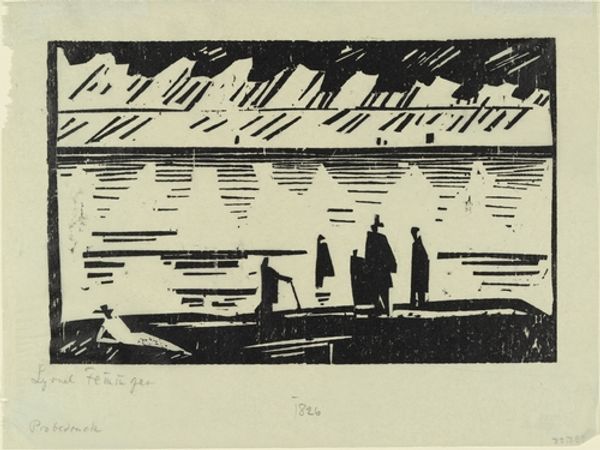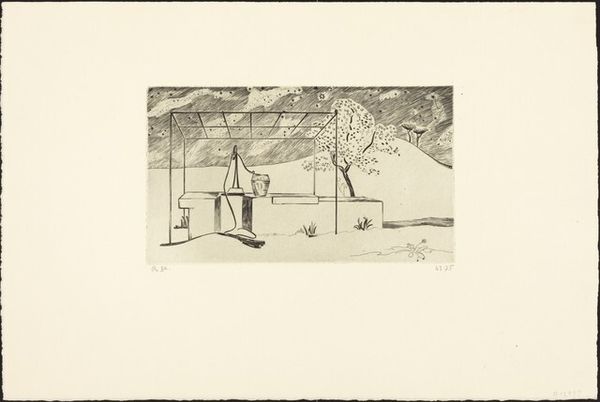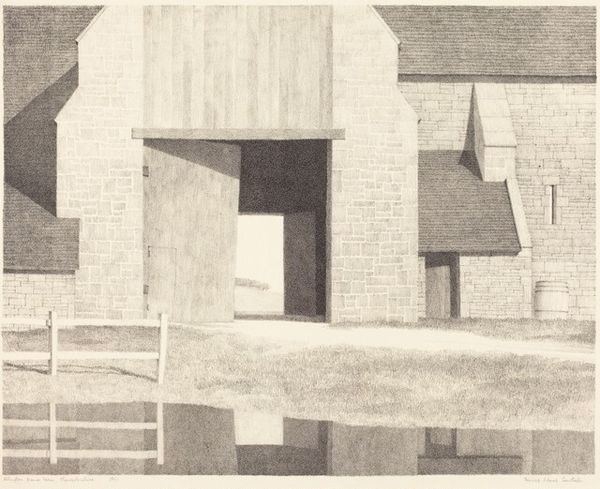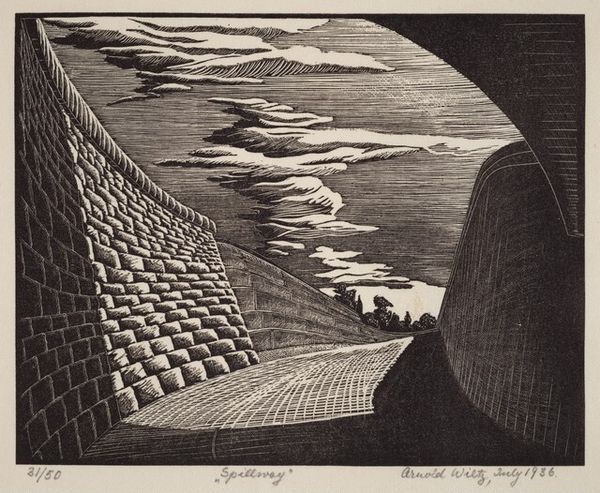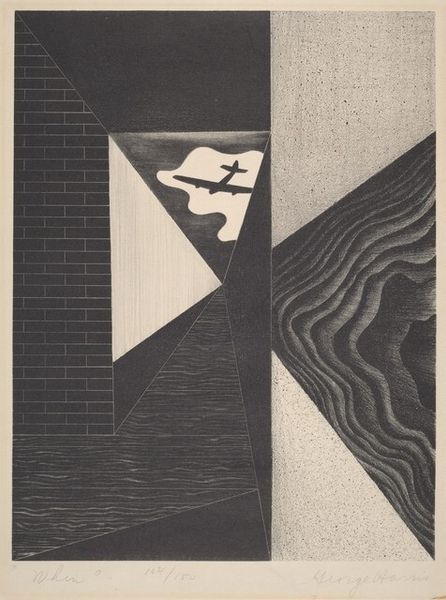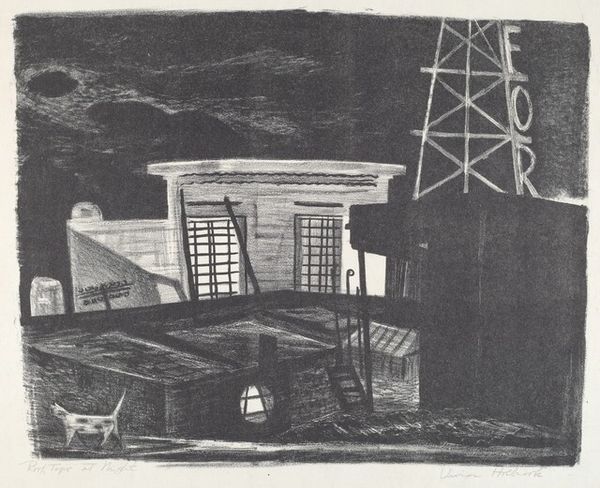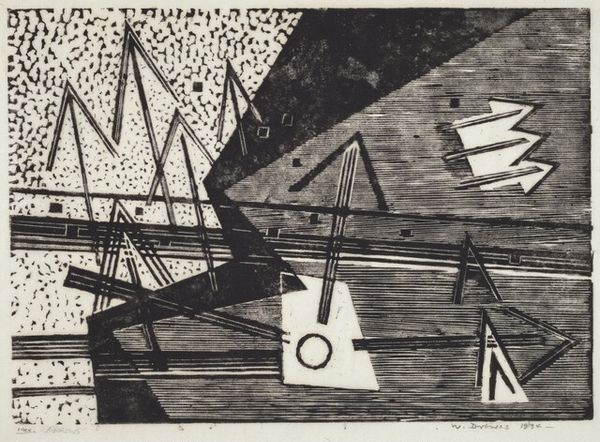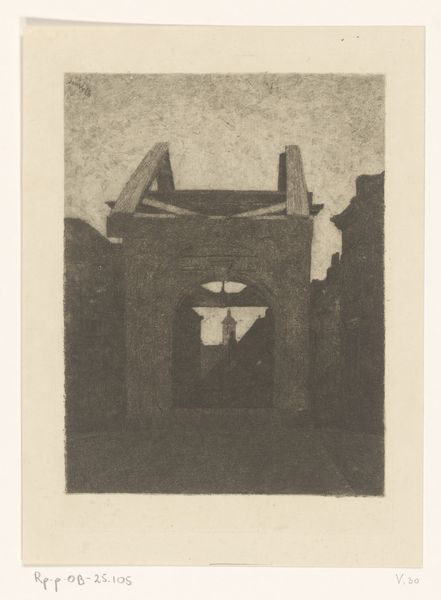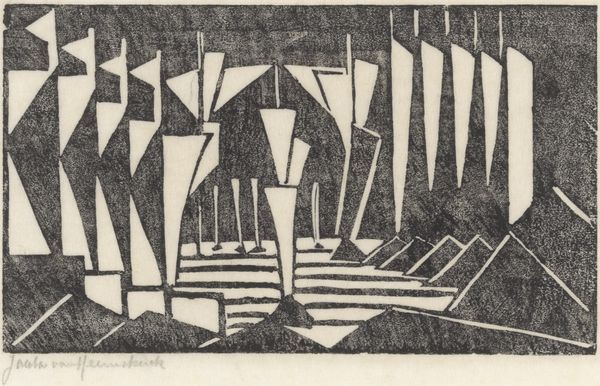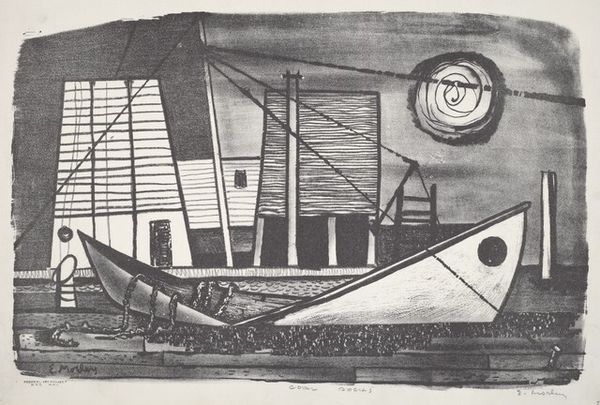
# print
#
perspective
#
geometric
#
cityscape
#
monochrome
Dimensions: image: 225 x 305 mm sheet: 305 x 453 mm
Copyright: National Gallery of Art: CC0 1.0
Editor: Here we have Herman Volz's "Pier 39", a print from 1940. It's all in shades of grey, and the perspective is just mesmerizing, pulling you right into the scene. The geometric shapes almost feel like a stage set. How do you read the composition of this print? Curator: This image really captures the interwar period's anxieties and fascinations with industrialization and modernity. The rigid geometry and almost surreal perspective create a feeling of both promise and unease. Look at how the arch frames the ocean, yet it is starkly contrasted by the large ships, cutting that view. What do you think that tension might suggest? Editor: Perhaps that human ambition – represented by those big ships – comes at the expense of nature? Or is that reading too much into it? Curator: Not at all! The choice of a monochrome print itself speaks volumes. In the 1940s, while colour photography was emerging, artists often chose black and white to lend their work a sense of timelessness, or to perhaps evoke a nostalgia for older forms of expression amidst technological advancements. Does the title 'Pier 39' impact your reading of the image? Editor: It does make me think more about location, that the socio-economic context shapes what the artist sees. Curator: Exactly. Consider the era – right before the US entered World War II. Ports were sites of departure, arrival, and intense activity. This print might subtly comment on that moment in time. Editor: I hadn't considered the impending war, but that lens changes everything! It's not just a beautiful geometric scene; it's a document of a society on the brink. Curator: Indeed, understanding the social and political context allows us to appreciate how art becomes a mirror reflecting the world around it. Editor: This makes me appreciate Volz’s work on a deeper level. It's a good reminder of how history shapes art, and how art reflects history.
Comments
No comments
Be the first to comment and join the conversation on the ultimate creative platform.


